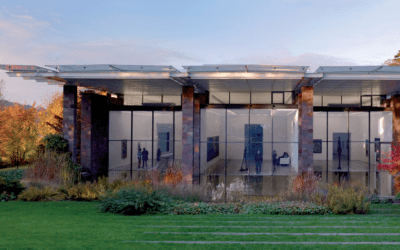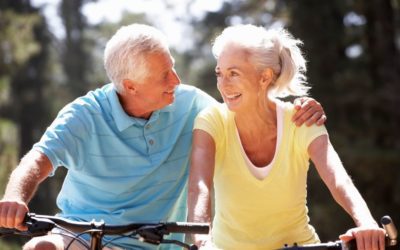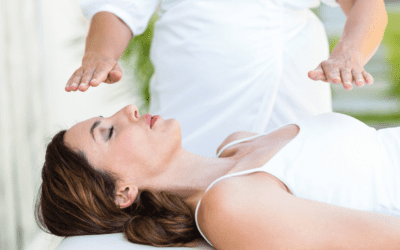Biologists, gerontologists, and researchers are trying to find a way to improve the quality of life for the ageing population. Our skin is the most important organ of our body regarding mass, surface area, and also fulfills several vital functions. It is also affected by ageing. The issue lies in the fact that the skin is constantly exposed to harmful outside effects, like UV radiation, pollution, and more. Skin ages in a variety of ways, like dehydration, atrophy, sagginess, loss of elasticity, the appearance of brown spots, and wrinkles. Sun radiation accelerates skin ageing the most, which is why researchers originally focused on making the most efficient sunscreen possible. Cosmetic treatment deals with these issues by temporarily improving the look of our skins. Cosmeceuticals, on the other hand, last for far longer beyond the application period and does wonder for wrinkles and such.
Want to learn more? Keep reading the article by Prof. Jacques Proust.
Over the past decades, medical and technological advances have contributed significantly to increasing human life expectancy. In industrialized countries, society is now struggling with the medical, social and economic consequences of an age pyramid that has been completely altered by the excessive growth of the older age groups. The substantial increase in the greying population has also led to the emergence of a huge market for certain consumer products attractive to people between 50 and 70 years of age. These are in particular products from the areas of nutrition, sporting activities, wellness, fashion and cosmetics.
Science and the ageing process
Biologists, gerontologists and researchers working in the pharmaceutical industry are trying their hand at developing therapeutic strategies to improve the quality of life of the ageing population. Their efforts are primarily aimed at increasing life expectancy while maintaining good health. In addition, the usual side effects of ageing such as pathologies, physiological decline and physical and mental weaknesses should be prevented as far as possible. In recent years, considerable progress has been made in understanding the biological mechanisms underlying the ageing process, senescence. It is now considered proven that one of the most important causes of ageing is the accumulation over the years of molecular damage related to our metabolism, genetic constitution, life history and environment. This molecular damage leads directly to significant dysfunctions inside cells, organs, systems and ultimately the organism as a whole. The identification of the basic mechanisms of ageing has naturally led to the elaboration and development of pharmacological means to prevent, slow down or even remedy certain physiological changes associated with ageing.
The skin: a mirror of our age and life history
The skin, as one of the components of our organism affected by ageing, has a very special status. It is the most important organ of our body in terms of mass and surface area and fulfils several vital functions, whether it is mechanical protection, sealing/permeability, temperature regulation, barrier against microorganisms, excretion of salts, synthesis of vitamin D or perception of tactile or sexual sensations. Their appearance reflects our age, our state of health, but also our life history. Skin ageing is a phenomenon that directly affects our daily lives and our psychological and social well-being.
A double ageing process…
Since the skin is constantly exposed to harmful external factors, it is doubly disadvantaged compared to other organs because it is exposed to both the internal (i.e. the skin is subject to both the ageing process associated with the passage of years and ageing caused by harmful environmental factors), e.g. UV radiation, pollution, changes in temperature and humidity as well as tobacco consumption, stress, malnutrition, etc. Skin ageing manifests itself in different ways: Dehydration, loss of elasticity and structure, atrophy, sagging, vulnerability, pallor, yellowing, appearance of brown spots and wrinkles.
Several molecular and cellular mechanisms involved in both internal and external ageing jointly influence the appearance of our skin: Deficiencies in the renewal of keratinocytes (cells of the epidermis), decline in the synthesis of collagen and elastin molecules (macromolecules that help form the house structure and are produced by specialised cells called fibroblasts), damage to collagen and elastin molecules by metalloproteases (degradation enzymes activated by UV rays), Alteration of the skin’s components by oxygen free radicals, as well as glycation products (two types of toxic molecules relentlessly produced by our metabolism), water loss (dehydration), deficient lipid production (brittleness), decrease in the vascularisation of the dermal papillae (paleness, yellowing), disorders of melanin synthesis (hyper- or hypopigmentation), etc.
Sun exposure is known to be the environmental factor that most accelerates skin ageing. This is why researchers in the cosmetics industry originally focused on developing efficient sunscreens and incorporating them into cosmetics.
A comprehensive therapeutic approach…
The skin is the organ in which the progression of changes caused by internal or external ageing, as well as their development under the influence of topical or parenteral therapeutic interventions, can best be observed because the skin is directly accessible for observation. Sun exposure is known to be the environmental factor that most accelerates skin ageing. This is why researchers in the cosmetics industry originally focused on developing efficient sunscreens and incorporating them into cosmetics. Thanks to the progress made in understanding the basic mechanisms for skin ageing, more sophisticated anti-ageing strategies are increasingly being developed.
A global therapeutic approach is required to effectively combat skin degradation due to ageing and sun exposure. The treatment of mature skin must take into account all the mechanisms involved in skin ageing, such as epidermal cell regeneration, synthesis and decay of extracellular matrix molecules, lipid-moisture balance, oxidation, glycation, pigmentation, etc. The therapeutic effect of many compounds (retinoids, antioxidants, glycation inhibitors, growth factors, peptides, lipids, anti-inflammatories, polyhydroxy acids, melanogenesis inhibitors, vitamins, minerals) on certain aspects of skin ageing has been scientifically proven. These active ingredients with often synergistic properties are now added to cosmetic products.
Cosmetics and cosmeceuticals
Unlike cosmetics, namely products that aim to improve the appearance of the skin immediately but only temporarily thanks to their aesthetic properties, cosmeceuticals contain ingredients with scientifically proven biological properties that act actively on the skin beyond the application period. Currently, a rich range of cosmeceutical preparations with varying degrees of clinical efficacy are offered to eliminate wrinkles and restore the skin’s key youthful properties. Cosmeceutical innovations are developing in parallel with the discovery of the complex relationships between the physiology of the skin and the biological mechanisms of ageing. At the same time, the development of new measurement methods enables the precise evaluation of the eventual benefits of age-fighting products, so that consumers can also be sure that these cosmeceutical preparations really do meet their expectations in all respects with regard to prolonging or restoring the skin’s youth.










